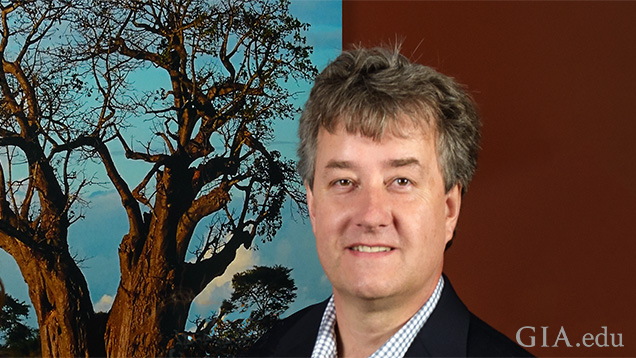A Review of HPHT Synthetic Diamonds Grown for
Jewelry Use

Our Fall issue serves up a wealth of topics, including HPHT synthetic diamonds, historical saltwater pearls from the New World, the photoluminescence (PL) spectra of emeralds, synthetic star corundum, and the Colombian emerald mine-to-market industry.
HPHT synthetic diamonds—including blue and colorless gems exceeding 10 carats along with mass-produced melee—are now a marketplace reality...
In our lead article, Drs. Sally Eaton-Magaña, James Shigley, and Christopher M. Breeding present a comprehensive study of several thousand HPHT-grown synthetic diamonds using data gathered by GIA between 2007 and 2016. Their study charts a transition from predominately orange-yellow goods to today’s more diverse products, where fashioned blue and colorless synthetics exceeding 10 carats and mass-produced HPHT melee grown exclusively for jewelry use are now a marketplace reality. We trust that this survey—which includes a review of current identification criteria for HPHT-grown synthetics—will prove immensely valuable for industry professionals.
The second paper is a collaboration between researchers at GIA and the Gübelin Gem Lab. Lead author Chunhui Zhou and his team detail 85 natural saltwater pearls reportedly recovered from Caribbean waters between the fifteenth and seventeenth centuries. The team’s analyses verified these fascinating pearls’ natural saltwater origin, and 14C isotope radiocarbon dating supports their attested age.
In the first of this issue’s two emerald papers, researchers led by Dr. D. Brian Thompson of the University of North Alabama investigate the PL spectra of 48 samples from Colombia, Afghanistan, and Zambia. Their research strongly indicates that variations in trace element concentration within emeralds from these localities correlate with differences in the strength and position of peaks detected in their PL spectra, which could be very promising for determining geographic source.
In our fourth paper, Dr. Karl Schmetzer, Prof. H. Albert Gilg, and Dr. Heinz-Jürgen Bernhardt delve into the characteristics of synthetic star corundum produced in Germany up to the 1970s by Wiede’s Carbidwerk. Grown by a variation of the Verneuil method followed by controlled annealing to exsolve the rutile needles, these synthetic gems are visually—and gemologically—distinct from the production of other manufacturers.
Next, Tomasz Powolny and Dr. Magdalena Dumańska-Słowik reexamine spotted “dalmatian jasper,” a popular decorative gem material. Based on their analysis of its composition and gemological characteristics, which do not meet the definition of jasper, the authors recommend use of the term “dalmatian stone.”
In our final article, Darwin Fortaleché, chief gemologist at Centro de Desarrollo Tecnológico de la Esmeralda Colombiana (CDTEC), and his GIA coauthors provide a comprehensive field report on current mining and the state of the Colombian emerald industry. They cite increased investment by multinational companies, the country’s largely untapped emerald reserves, and the initiation of chain-of-custody systems as hopeful signs for the future.
Our Lab Notes section features an entry on a large, high-quality diamond from Brazilian kimberlite. Topics in our Micro-World section include hematite roses and a “flower-in-the-rain” inclusion within a Sri Lankan sapphire, while our Gem News International section spotlights blue-green pyrope-spessartine with high vanadium content and two potential new sources of Nigerian sapphire.
Please enjoy the Fall G&G!



